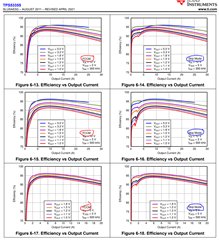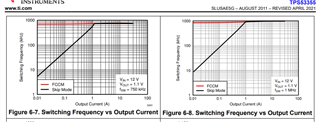Tool/software:
HI,
Am using TPS53355 part in my design, what is major difference between Auto skip and forcedCCM mode? which mode is better?
Regards,
Balkis
This thread has been locked.
If you have a related question, please click the "Ask a related question" button in the top right corner. The newly created question will be automatically linked to this question.
Tool/software:
HI,
Am using TPS53355 part in my design, what is major difference between Auto skip and forcedCCM mode? which mode is better?
Regards,
Balkis
Hi Balkis,
The major difference between Auto-Skip mode and FCCM mode is the switching frequency at light loads. FCCM mode means the buck converter maintains a constant switching frequency throughout light loads and heavy loads. Skip mode, which is also known as DCM mode, reduces the switching frequency at light loads, which effectively reduces switching losses in the converter, which results in an increase in efficiency at light loads. For example, when you view the SW waveform on an oscilloscope in Auto-skip mode, you can see at lighter loads, the switching frequency is inconsistent as it is pulsing and decreasing from the normal switching frequency. This helps with efficiency at light loads. FCCM mode is consistent switching frequency at all times. Both modes work well, and one is not necessarily better than another. It just depends on what your application requires and what your conditions are. If you have lighter output current requirements, then Skip Mode is the better mode to use. If you require constant continuous fixed switching frequency, then FCCM would fit better. This device, and many of our devices have the ability to use both modes.
Below is some efficiency data for TPS53355 between both modes with FCCM on the left column and Skip Mode on the right column:

Below is Switching Frequency data vs Output Current:

More data can be found in the TPS53355 datasheet.
Hope this helps. If this helped answer your question, please don't forget to click "This resolved my issue"
Thank you,
Calan